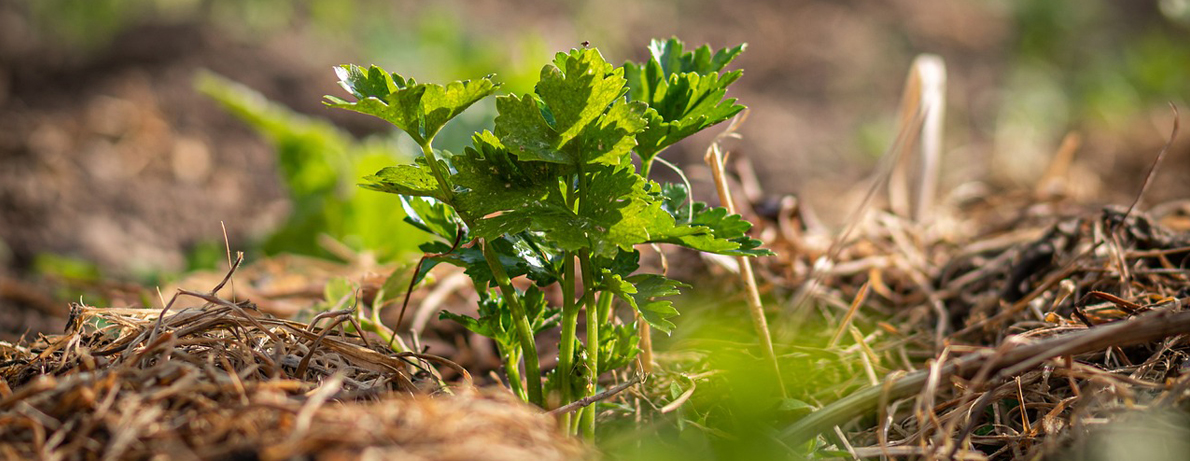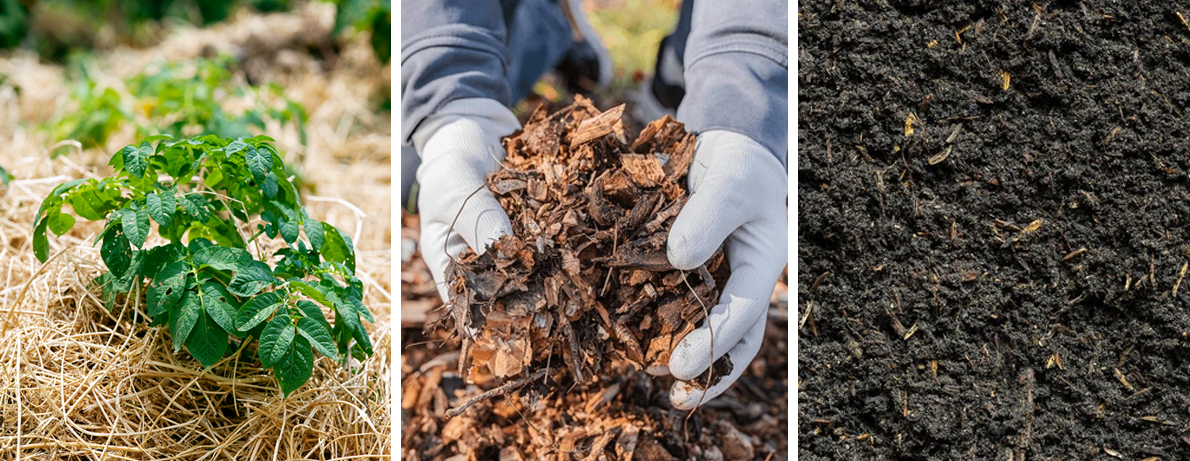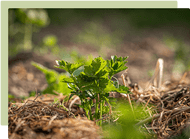Posted by Kelly Jean Reyland
4th Dec 2023
What’s so great about mulch?

Everything. Actually.
But I will make a disclaimer – that does depend on the type of mulch you use! They are not all created equal! We’ll get to that later in the blog though.
Good mulch improves the quality of the soil, maintains soil moisture levels and helps to suppress weeds. It does take work as it needs to be renewed at least annually but the benefits definitely outweigh the negatives!
With a hot dry summer forecast, in my view the best thing we can do for our garden is to ensure it has a thick layer of mulch spread all over it to help maintain that precious soil moisture and keep the plant roots cool which helps to make our plants more resilient to the stresses of drought.
Applying mulch essentially mimics what happens in nature. Leaves and other plant material fall on the soil, creating a protective layer which breaks down over time and improves the soil. Soil that is left exposed to the elements is vulnerable to erosion from both wind and rainfall, soil moisture evaporates easily and plant roots are exposed to fluctuations in temperature. Weeds are also more likely to spring up and compete. None of these are helpful things.
The usual mulch options have their pros and cons. Choose wisely!
Bark - a favourite due to its natural look and the different grades and colours. It also has the benefit of eventually breaking down and improving the soil. Beware of using freshly chipped bark, the initial breaking down process actually draws nitrogen out of the soil, affecting your plants. Choose carefully and look for an already aged bark supply. If there are already perennial weeds in the garden before you lay the mulch, it is helpful to lay a layer of cardboard which will help to suppress the weeds from coming up and through the mulch. Bark is a convenient and economical option with bagged or bulk options freely available.

Compost - You might think, isn’t that just soil? But no. Compost is green matter in its final stages of breaking down into Humus which is a super helpful type of organic matter to have in your soil. If you make your own compost, you have the benefit of controlling what goes into it. Ensure if you are buying it that you get it from a reputable source. Be wary of council collected green waste compost that can have noxious weeds or weed killer residues in it. Your soil will love you if you spread this around on a regular basis – even better if you make your own to use!
Pea straw - Not always easy to get hold of in urban areas and not ideal for windy areas but if you have access and your spot is sheltered, it is an effective choice. Ensure that it is laid in a thick layer. Be aware that you may get pea seedlings popping up but these are easily removed. Pea straw absorbs water and holds it.
Weed mat - it hit peak popularity when the stones and native grass ‘low maintenance’ gardens were popular in the late 90’s. Unfortunately, many people thought using black polythene was a cheaper and suitable substitute. Please don’t do this!!! Soil is a living organism so it needs to breathe and get food and water.
Woven, permeable weed mat has its place in steep areas where mulch will just slide off or under stones for both weed suppression and water retention. But even if the soil can breathe and get rain water, it doesn’t get any organic matter to rebuild and refresh. This doesn’t leave the soil in the best condition over time. There are now more natural options available such as coir fibre (the fibre off the outside of a coconut) which holds soil moisture but will break down over time. This is a great option where new plants will eventually grow and cover the soil up but it just needs some cover in the short term.
Stones - this is a decorative mulch rather than one that improves the soil. Ensure that you use a layer of permeable weed mat so the stones don’t work into the soil. Weeds will still drop into the stones but will pull out easily. The issue with stones is that they will absorb heat during the day and release it during the night. This can be a helpful thing for creating a microclimate for tender plants but it does also make a hot and dry spot, hotter and drier. Rainfall is more likely to evaporate off the rocks before it gets down to the soil.
Choose its position carefully. Larger leaves are much easier to remove when they fall on the stones, rather than many small leaves that settle in amongst the stones.
Commercial mulch products - These are the best of both worlds, combining food and protection for the soil. Expensive for large areas as you can usually only buy it as a bagged product. Convenient for getting home and moving around the garden because it is a bagged product. Can be used in large pots as well. Improves the soil as well as provides protection and retains moisture. A highly recommended option if the expense isn’t a barrier.
Mulch, like the natural process it mimics, is best applied in several applications throughout the year, this gives the mulch a chance to breakdown before the next layer is laid. It is also vital that the soil is damp before the mulch is laid. As a general rule, the soil moisture level will stay the same after the mulch is laid, so thoroughly dampen or lay it after a decent rain. Apply it in spring or autumn when there is plenty of soil moisture and it will retain it throughout the drier months.
In order for it to be truly effective, a thick layer of at least 5 cm is needed but ensure that you don’t bury the trunk or stem of the plants / trees. Keep the mulch back from touching it where possible. This helps avoid collar rot setting in and other issues that can keep a plant /tree from thriving.
Help your plants stay happy and healthy and thrive through summer and save yourself time and money on watering! Mulch is a win-win situation.
Written for Gubba by Kelly Jean Reyland from Garden Advice NZ (www.gardenadvice.co.nz)


























